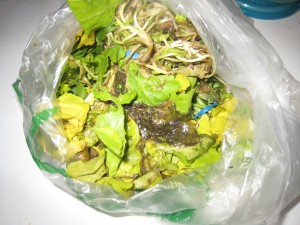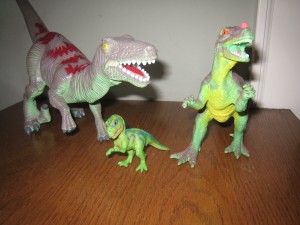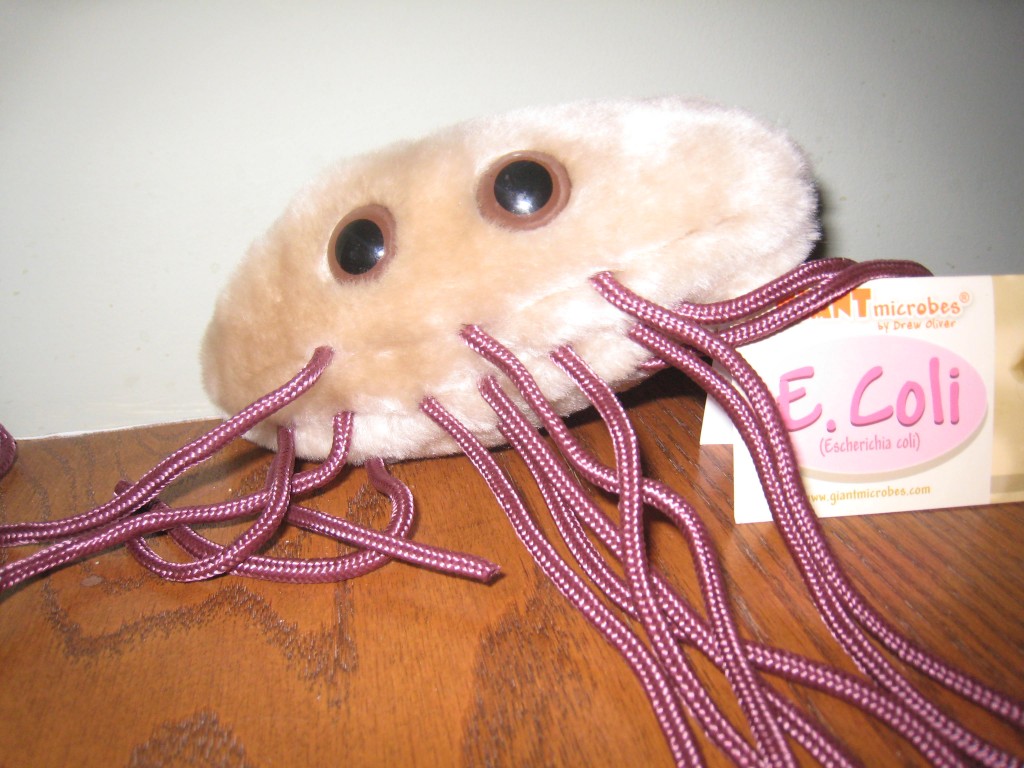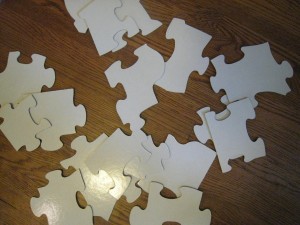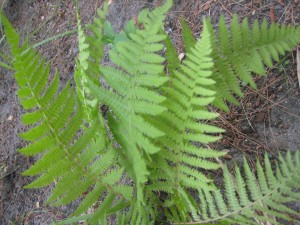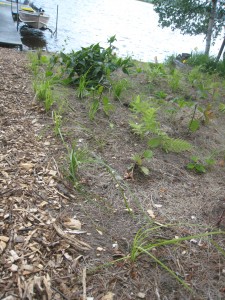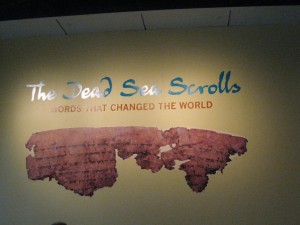Category:The World Around Us’
Donate soap- You could save a life!
- by KitchenPantryScientist
I just got this email about a drive to collect soap for Haiti, since simple handwashing can help prevent the spread of a horrible disease called cholera. If you want to know more about the disease, here’s a post I wrote when the outbreak started. PBS recently gave this update on the current situation.
Information on how and where to donate : Students at Highlands Elementary in Edina, Minnesota are asking for the community’s help in reducing the spread of cholera in Haiti. Please donate new, unused soap bars (travel-size and bath-size soap bars). Not accepted: liquid soap and hand sanitizer. Donations will be accepted through Monday, February 28. The soap bars will be shipped to Haiti and distributed to orphanages, schools, and tent cities set up after the earthquake last year. Collection sites: Edina Police Station, Edina Fire Station at Hwy 62 & Tracy Avenue, Edina Senior Center, Highlands Elementary, Cornelia Elementary, South View Middle School, and Edina High School.
If you live nearby, please consider dropping off a few bars of soap. You could save a life!
Does Relaxation Help Asthma Symptoms?
- by KitchenPantryScientist
In many diseases, the link between mind and body is strong, but the science behind the connection is difficult to decipher.
I don’t remember many kids with asthma back when I was young. Now, I have a son with mild asthma who has to take a puff of Albuterol before soccer and basketball games so he doesn’t start to cough, and cough, and cough.
Today, almost 10% of children suffer from this disease of the airways and many deal with severe breathing issues and have to take drugs to suppress their immune systems, in addition to carrying an inhaler to treat attacks. Researchers trying to find better ways to treat asthma have studied whether relaxation techniques can help, or even stop, attacks when they occur.
Anxiety and emotions seem to play a role in asthma attacks, but exactly what role is unclear. Some studies have shown that teaching kids (and adults) to relax and breath slowly and deeply, using their diaphragms, can help them manage asthma attacks more calmly and successfully. However, relaxation alone can’t resolve the underlying issues and must be used along with prescribed medication to treat attacks.
Does your child have asthma? Do you feel the attacks are worse when panic sets in? Have you tried to teach them any relaxation techniques and has it helped?
I recently received a copy of a children’s book that was written to teach kids relaxation techniques to use during asthma attacks, alongside their medication. It’s called “Alfie’s Attack” and is nicely illustrated with a story about a fish and a shark who both have asthma. In the back are inhaler stickers with characters from the book to remind kids not to panic. You can order the book at www.VitalityBooks.com. Leave a comment here for a chance to win a copy (along with the inhaler stickers.) I’ll do a random drawing Friday 12/17 to choose a winner.
Disclaimer: This book was provided by Vitality Books for review. I was under no obligation to offer a favorable review.
Be Thankful for Clean Water
- by KitchenPantryScientist
This Thanksgiving, here is what I’m thankful for:
A nasty stomach virus burned through our house this week (I blame a communal bowl of popcorn.) Following the kids around, I cleaned up after them with disinfectant wipes and lots of soap and water. If I didn’t hear the comforting swoosh of the faucet following the sound of a flush, I’d yell “wash your hands!” When they emerged from the bathroom, I’d hand them a glass of water or bottle of sports drink to sip so they could replace the fluids they’d lost.
In Haiti, for most people there are no clean toilets and there is no clean water for hand washing. There often isn’t clean drinking water and ditches are filled with sewage. Over 1,000 people have already died in a recent cholera epidemic and countless more are infected. Cholera is a disease of people living with poor sanitation.
What can you do to help?
Click the link above to donate a day of clean water to someone in the third world. Here’s what P&G is doing now to help with the cholera epidemic in Haiti. You can click once a day!
According to the World Health Organization, waterborne diseases remain the leading cause of illness and death in the developing world. Every 20 seconds, a child in a developing country dies of a water-related illness. Bacterial diseases caused by E.coli and Vibrio Cholerea, parasites like Guinea Worm, viruses and protozoa are all carried by unclean water. Some of these potentially deadly organisms can be killed by boiling, but for many people in the world, firewood is scarce.
We don’t know how lucky we are. Be thankful for your clean drinking water, even if it tastes like chlorine. Be thankful for your toilet.
Happy Thanksgiving and don’t forget to wash your hands!
Many aid organizations and churches have programs to help people get access to clean water and proper sanitation, whether it’s by helping dig wells or sending bars of soap. WaterAid is a U.K.-based international non-profit organization that is helping bring not only clean water, but sanitation and hygiene programs to many villages desperate for clean water. The organization makes local women an integral part of the process. Proctor and Gamble, who is running the Clean Water Blogivation campaign, make a PUR powder which can be mixed with contaminated water to make it safe to drink. They have a Children’s Safe Drinking Water program and have been working with a number of organizations to distribute the PUR powder around the world to those who don’t have access to clean water.
There’s a fairly comprehensive list of water-born microbes on Wikipedia, and if you’d like to learn more, the World Health Organization and the Center for Disease Control are great resources.
What Are You Wasting?
- by KitchenPantryScientist
According to the new book “American Wasteland: How America Throws Away Nearly Half of Its Food”,by Jonathan Bloom, Americans are throwing away up to half of the food produced in this country. We should be ashamed of ourselves.
The waste begins in the fields, where produce that is imperfect, or hard to pack, is left to rot. From there, our food takes a 1,500 mile (on average) journey to the grocery store. There are casualties of up to 15% along the way. Once in the supermarket, an enormous amount of imperfect produce and meat is discarded.
The few, hardy survivors that reach our refrigerators at home stand a 15% to 25% of being tossed into the trash, rather than eaten.
I’d love to say that I wasn’t guilty of throwing food away, but I can’t. I waste an embarrassing amount of food. Piles of lunch meat get tossed every week when I think three days have passed. (Didn’t I see something on the news once about how quickly lunch meat goes bad?) Sometimes I have to hold my nose as I carry an unrecognizable vegetable to the organic composting bin. Meat gets pushed to the back of the freezer, soon to be covered with a layer of white permafrost.
Wasting food is not only expensive, but it’s bad for the environment. Food rotting in landfills adds methane gas (a greenhouse gas) to our already warming atmosphere.
What can I do? I can cut a bad spot off of a red pepper and use it anyway. I can make banana bread and apple crisp out of brown bananas and mushy apples. I can label food in my freezer and try to use it before it becomes mystery meat. I can try to buy more food that’s grown and raised locally, so it doesn’t have the chance to rot in trucks.
I’m on a mission!
How much food do you waste? What do you do to keep track of and use the food you have on hand? I’d love to hear your tips!
You can go to stilltasty.com to find out what the shelf life is on the food in your fridge. You may be able to keep some foods longer than you think! Just remember to always throw away moldly nuts and breads, since they can contain potent toxins made by fungi.
Twenty Questions
- by KitchenPantryScientist
“Dad! Ask me scientific question!” was a common refrain from the backseat of our station wagon when I was a kid. My dad is a physicist, and encouraged my sister and me from a young age to think about the world around us. On one level, I’m sure that talking about science was a way for me to connect with my dad, but after some time, I started to look at the world differently and ask my own questions.
On long car trips, we loved to play twenty questions. Not only was it a fun game, but without realizing it, we were learning to organize information and ask good questions.
“Is it an animal?”
“Yes!”
“Does it eat meat?”
“Yes!”
“Is it a mammal?”
“What’s a mammal?”
In other words, you don’t even need a lab, or even a kitchen table to do science. Every time you bend over to look at a bug, point out a bird or talk about the moon, you’re doing science with your kids. Teaching them to be curious is one of the greatest gifts you can give.
How do you teach your kids to be curious?
Why Worry about Genetically Modified Salmon?
- by KitchenPantryScientist
In the movie Jurassic Park, a tale of genetic engineering gone bad, scientists arrive on an island to find that an all-female population of resurrected dinosaurs may have found a way to breed. The following conversation ensues:
Henry Wu: You’re implying that a group composed entirely of female animals will… breed?
Dr. Ian Malcom: No, I’m simply saying that life, uh… finds a way.
As we find out later in the movie, the dinosaurs have indeed been breeding.
Salmon farmers tell us that a proposed population of genetically modified “super salmon“ will be composed entirely of sterile females, making it impossible for them to mate, should they escape to the wild. Some consumers are fighting FDA approval of the fish as food and say consumers should be alerted to the fact that they are purchasing the genetically engineered fish (by way of labeling.)
Advocates of the super salmon claim the meat from the new super salmon is indistinguishable from that of their natural cousins. However, critics fear that the new “frankinfish” may pose danger to both consumers and to the environment.
Super salmon are Atlantic salmon that have had a gene (DNA) for a growth hormone normally made by Chinook salmon inserted into their genetic map. In addition, scientists have put some DNA from another ocean fish, called a pout, in front of the growth hormone gene to keep the fish’s body pumping out growth hormone all of the time.
The don’t get bigger than natural salmon, but they grow much faster. This creates a potential threat to wild salmon, should the modified salmon escape from fish farms. (They would potentially out-compete and out-breed their natural counterparts in the wild.)
Despite claims that super salmon will all be sterile females, one article I read mentioned that ” a small percentage might be able to breed. They would be bred in confined pools where the potential for escape would be low.” Another stated that the FDA says that up to 5% of the eggs may be fertile.
Genetic engineering has resulted in many products that make people’s lives better, but we have to be aware of the danger it poses. Microbes, plants and animals can swap DNA and genetically modified organisms are already finding ways to invade the natural world.
Life finds a way, whether we want it to or not. It is not something to be taken lightly.
Do E.coli have eyes?
- by KitchenPantryScientist
Last night, one of my nursing students brought this cute little E.coli bacteria in to be our microbiology class mascot.
Bacteria are classified, or grouped, by shape, and this little guy is rod-shaped just like all of his close relatives. E.coli are called gram-negative bacteria because their cell walls are put together with special building blocks that can’t be stained with certain dyes they use to tell bacteria apart from one another.
See the little ropes coming out of our mascot’s body? Some E.coli have whip-like filaments called flagella protruding from their body that can help them move around, making them “motile.”
Many E.coli are normal occupants in animal and human intestines and don’t make people sick, but there are some strains of E.coli that can make people very sick. E.coli 0157:H7 is probably the most famous of these and can be contracted from eating undercooked hamburger that has been contaminated with the bacteria.
And no, bacteria don’t have eyes. But they sure look cute on our mascot.
The Puzzle of Lupus
- by KitchenPantryScientist
My uncle told me one day that he wasn’t interested in learning anything new. I didn’t believe him.
Every nugget of information you glean in life, no matter how small, is a puzzle piece. When the puzzle pieces fit together, however unexpectedly, it can make your life a richer, happier experience. Maybe there’s a reference in a movie to something you’ve read, and you get the joke. Maybe you know from past cooking trials that what your sauce needs is a splash of vinegar to transport it to the next level. Everyone has their own puzzles and everyone chooses which pieces to keep in the front of their minds, while other pieces are allowed to recede into the background. (I’ve found that when you’re a parent of young children, many, many puzzle pieces recede into the background, but every once in a while they still pop out and surprise you.)
I recently jumped at an opportunity to teach microbiology to nursing students. Teaching microbiology, I learned, also involves teaching biochemistry, genetics and immunology. Consequently, I’m pulling out lots of old puzzle pieces and frantically dusting them off in my mind. It’s amazing how complicated some of them are, and how hard I have to struggle to make them fit together, but it’s satisfying to rebuild things you’d forgotten about and see patterns reemerge.
While scanning the textbook I’m lecturing from, I read about some new insights into Lupus, an autoimmune disease that causes people’s immune systems to attack their own bodies. It’s a mysterious disease, whose treatment is often almost as bad as the symptoms. Two of my friends suffer from it.
Since I last read a microbiology textbook, (more years ago than I care to admit) researchers have come up with some evidence that suggests that individuals susceptible to the disease have some pieces of DNA that are missing a chemical “cap” that tells the immune system that it’s human DNA. Imagine a bunch of kids in baseball caps that identify them as being on the same team. Now imagine that one kid shows up without a cap. No one knows he’s on the team. In fact, he may be on the other team, since he’s missing a cap. The “imperfect” DNA appears to the immune system to be DNA from a bacterial or viral invader. This may cause the human body to attack the very thing it is trying to defend: itself.
Researchers finally have enough results, enough puzzle pieces, to start to understand this devastating diseases (and I had put enough pieces of my own scientific education back together to understand that my friends with Lupus might have a better treatment someday soon.) I can’t wait until the final pieces of the Lupus puzzle fall into place.
What puzzle pieces could use some dusting off in your mind? What new puzzle pieces can you add? You’re never too old to do puzzles.
Shoreline Restoration
- by KitchenPantryScientist
Fall and spring are great times to plant. The weather is cool and rainy, allowing small sprouts to take root and thrive. If you’re headed up to the cabin this weekend, why not survey your shoreline and think seriously about naturalizing it? It’s easier than it sounds, you’ll love how it looks, and best of all, you’ll be taking a step to make sure your kids and future generations will be able to enjoy the lake in years to come.
Until this summer, my husband’s parents had a grassy, green lawn running from where their cabin stood down to the rocks which had been placed at the water’s edge many years ago. Many of the rocks were slipping into the lake, and the shoreline was beginning to tumble into the water too. Their lake, like many, is susceptible to potentially dangerous blue/green algae blooms, and lawns like theirs contribute to the problem, as fertilizer can flow easily from the lawn into the water.
Last year at the state fair, they spoke with someone who told them they might be able to get a grant through the Atkin County Soil and Water District and the Big Sandy Lakes’ watershed project (originating from the Department of Natural Resources) to help them naturalize their lake shoreline, if they were willing to contribute the labor. They applied and were able to get a grant, work with a landscaper, and replant their shoreline with plants that will slow runoff, reduce erosion, and filter nutrients that can cause algal blooms in the lake. The plantings are filling in after being planted in July, and they look beautiful! Many of the plants have lovely flowers (Lupine, Flox, Columbine) and plants like Swamp Milkweed, which grows close to the water, will be butterfly magnets next summer.
A shoreland buffer strip (also called a filter strip or buffer zone) separates your lawn from the lake. It typically includes taller grasses, blooming plants, shrubs and trees, as well as aquatic plants such as cattails, rushes, and lilies. The work we did involved killing a strip of grass along the lake shore, cutting pieces of wild willow to bind together and stake at the water’s edge, putting natural mesh along the sloped land next to the lake and planting native plants in the prepared area. The dead grass served as mulch and my in-laws had a planting party for friends and other residents of the lake who were interested in learning about what they were doing. I think with 12 people, it took about 3 hours to do all the planting. Not bad for a day’s work.
If that sounds to intense, according to the University of Minnesota’s Shoreland Management Resource Guide, “The easiest approach to establishing a buffer strip is simply to do nothing. If you stop mowing, weeding, and raking your shoreland area, many native plants will likely reestablish.” The link above also lists local nurseries where you can buy native plants and suggests who you can talk to about what to plant on your lake. Or, get in contact with your local lake association to find out whether they have grant money available to help you naturalize your shoreline.
Our cabin still has a mowed green lawn behind the shoreland buffer strip, but we don’t fertilize it and it’s nice to know that someday our grandchildren may swim in cleaner, safer water and catch butterflies in the swamp milkweed by the lake’s edge.
The Mystery of the Dead Sea Scrolls
- by KitchenPantryScientist
This morning, a friend and I headed for the Science Museum of Minnesota to see the “greatest archeological find of the 20th century”, the Dead Sea Scrolls. A Bedouin goat herder stumbled on the first of the ancient scrolls in a cave near the Dead Sea in 1947. Eventually, 10 more caves containing scrolls were discovered near the first cave, and near the ancient ruins of a settlement known as Khirbet Qumran. Later, more scrolls were found in caves around the Dead sea and the Judean Desert. Altogether, more than 900 scrolls were discovered.
The scrolls were often contained in pottery jars, and though many of the scrolls are damaged, it is astonishing that so many of them are in good enough condition to read, or piece together. Two thousand years is a long time for a piece of parchment (animal skin) or papyrus (made from plants) to survive. Scientists attribute the miraculous preservation to the dry conditions in the caves. After all, you need moisture for microbe growth and decomposition.
Using radiocarbon testing, which takes advantage of the fact that all living things incorporate Carbon 14 when they are alive, scientists were able to determine that the scrolls dated from the centuries between 250 BCE and 68 CE. One of the first things I noticed in the exhibit was the use of the term BCE (before common era) and CE (common era), which correspond to B.C. and A.D., but are terms used by scientists.
On the scrolls were mostly words of Hebrew scripture, law and even poetry. Not all of the writing on the scrolls is religious, but the scrolls we viewed were copied from scripts that would one day appear in the Hebrew Bible and included an Apocryphal Psalm, attributed to King Solomon and to David. One scroll we saw was a passage from Genesis and all of the scrolls were copied down before the Hebrew Bible had been set in stone.
What fascinated me most about the exhibit was that the scrolls were copied down during such a tumultuous, pivotal time in the heart of a culture experiencing an uprising of the common people and the birth of Christianity. Archeaologists believe that even as scribes copied the some of the sacred texts onto the scrolls, Jesus was walking through the Holy Land with his disciples. Rome was gaining power in the region, and the Pharisees, representing the common people of Judea, were beginning to rise up against the Priests, or Sadducees, who tended to come from aristocratic families. The Pharisees believed in maintaining an oral tradition so that common people, many of whom could not read, had access to “God’s Word”, while the Sadducees believed in a written tradition, which they interpreted very strictly.
Archeologists and Biblical scholars tell us that Jesus was crucified and Christianity was born as modern Judaism was being shaped, the Judeans rose up against the Romans, and the Temple fell, for the second time, in 70 CE, shattering a way of life for many. Scholars don’t know for sure who hid the scrolls in the caves, or why. It’s a mystery, but there the ancient manuscripts sat, right before my twentieth century eyes, words marching across the page. They stared at me from the Minnesota Science Museum, a world away from where they were penned, a testament to a people who would not be forgotten and a time that changed the world.

